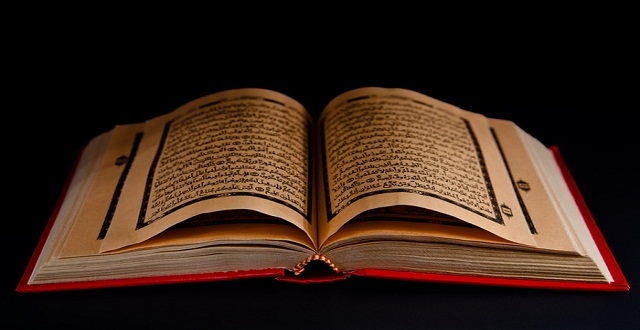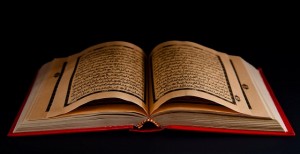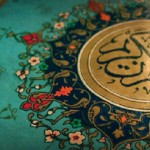What do al-Huruf al-Muqatt’ah (The Broken Letters) of the Qur`an mean?
In the beginning of 29 chapters of the Noble Qur`an we come across al-Huruf al-Muqatt’ah (the Broken Letters) and as the name implies, these letters appear to be broken up and separate from one another. They apparently do not seem to convey any meaning.
The Broken Letters have always been considered to be of the mysterious words of the Qur`an. Commentators have presented numerous and varied interpretations for them – new suggestions surfacing with the passage of time and as a result of new research and study on the part of scholars.
Interestingly, we do not find any mention in history that the Pagan Arabs or the polytheists had ever faulted and criticized the presence of these Broken Letters, located at the start of the numerous chapters of the Qur`an, or used their presence to ridicule the Noble Prophet (s.a.w). This fact itself indicates that apparently even they were not completely ignorant of the mysterious nature of these Letters.
From amongst these interpretations, there are some which appear to be more significant and authentic than others, and are also in conformity with the results of the latest research performed in this regard. We dwell on some of the most important of these here:
1. These letters refer to the fact that this divine Book – with all its greatness, which has left all the Arab and non-Arab orators astounded (over its eloquence) and has left scholars helpless and incapable of opposing and challenging it – is composed of these very alphabets and letters, which everyone is aware of.
But, despite the fact that this Book is comprised of these very ordinary letters and alphabets, its words are so well-proportioned and symmetrical, and possess such lofty meanings that they penetrate into the very core of man, filling his soul with admiration and acclaim, and forcing minds and intellects to acknowledge its greatness. The disciplined order of its words and the construction of its sentences are of the highest degree, placing the loftiest of meanings into the moulds of the most beautiful of words, in a manner that has seen no parallel.
Another point that tends to corroborate this meaning is that in 24 of the chapters which begin with the Broken Letters, these letters have been immediately followed up by the mention of the Qur`an and its greatness, and this itself is indicative of the fact that there exists a relation between the Broken Letters and the greatness of the Qur`an. At this juncture we present a few examples of these, as follows:
الر كِتَابٌ أُحْكِمَتْ آيَاتُهُ ثُمَّ فُصِّلَتْ مِنْ لَدُنْ حَكِيمٍ خَبِيرٍ
“Alif Lam Ra (This is) a Book, whose verses are made decisive, then are they made plain, from the Wise, All-aware.”22
طس تِلْكَ آيَاتُ الْقُرْآنِ وَ كِتَابٍ مُبِينٍ
“Ta Sin. These are the verses of the Quran and the Book that makes (things) clear.”23
الم تِلْكَ آيَاتُ الْكِتَابِ الْحَكِيمِ
“Alif Lam Mim. These are verses of the Book of Wisdom.”24
المص كِتَابٌ أُنْزِلَ إِلَيْكَ
“Alif Lam Mim Suad. A Book revealed to you.”25
In all of the above, as well as numerous other instances, the Broken Letters have been immediately followed up by the mention of the Noble Qur`an and its greatness.26
2. Possibly, one of the objectives of these Broken Letters was to attract the attention of the listeners and to silence them and invite them to give ear. This is because the mention of these letters, in the beginning of a speech, was something strange and novel for the Arabs and would arouse their curiosity and consequently, they would listen to the speech following these letters.
Incidentally, the majority of the chapters which begin with the Broken Letters are those, which have been revealed in Makkah and we do know that in Makkah the Muslims were in a minority, and the stubborn and obstinate enemies were loath to even listen to the words of the Noble Prophet (s.a.w). At times they would create such uproar that the voice of the Noble Prophet (s.a.w) would be lost in the commotion – a fact that has also been alluded to in some of the verses of the Qur`an (like verse 26 of the chapter Fussilat).
3. In some of the traditions of the Ahlul Bayt G, it has been mentioned that these Letters are a kind of code and an allusion to the Names of Allah. For example (المص) in Suratul A’raf alludes to:
أََناَ اللٌّهُ الْمُقْتَدِرُ الصَّادِقُ.
Meaning, “I am Allah, The Powerful, The Truthful.”
As such, each of the four letters is an abbreviated form for one of the Names of Allah.
The act of substituting an extended form with an abbreviated version has been in practice since ancient times, although its use has assumed greater proportions in our times, for we observe numerous instances wherein elongated expressions and names of organizations have been condensed into a small and single word.
It is necessary to mention that these various interpretations for the Broken Letters are in no way contradictory to one another since it is possible for all of them to be intended together – viewing them as various latent and hidden meanings of the Noble Qur`an.27
4. There is a possibility that all or at least some of these Broken Letters possess specific meanings – just as a word encompasses a meaning within itself.
Incidentally, we observe that numerous traditions and many commentators, in connection with the beginning of the chapters ‘Taha’ and ‘Yasin’, state that طه (Taha) is in the meaning of ياَ رَجُل (‘O’ Man!)’ . In addition to this, we also come across certain Arab poems, some of which are probably associated with the period co-incident with the onset of Islam or even before it, in which the word ‘Taha’ possesses a meaning similar to “O’ Man!’ or something close to it.28
As one reliable source has informed us, a few Western scholars involved in the study of Islamic issues have generalized this notion to include all the Broken Letters and are of the belief that these Letters, located at the start of the chapters, are words possessing a specific meaning, some of which have been pushed into oblivion with the passage of time, while others have managed to reach us.
For otherwise, as they reason, it appears very improbable that the Arab polytheists would hear the Broken Letters, not comprehend their meanings and at the same time not use it as a pretext for mocking and ridiculing – and history has not recorded a single instance where these foolish cavaliers had ever used the Broken Letters as an excuse to react in this fashion.
Although it appears difficult to accept this theory, universally and with respect to all the Broken Letters, its applicability with respect to some of them is quite acceptable; however, this is an aspect that has been an object of discussion in the Islamic sources too.
It is interesting to note that in a tradition from Imam as-sadiq (a.s) we read that ‘Taha’ is one of the names of the Noble Prophet (s.a.w) and means:
ياَ طَالِبَ الْحَقِّ الْهَادِي إِلَيْهِ.
“O’ Seeker of The Truth (and) the guide to it.”
From this tradition it can be concluded that ‘Taha’ comprises of two cryptic letters: طا (Ta), which refers to:
طَالِب الْحَقِّ.
“Seeker of Truth”
and ها (Ha), which alludes to
أَلْهَادِي إِلَيْهِ.
“The guide to it.”
A final word in this regard is that the word طه (Taha) like يس (Yasin), with the passage of time, has gradually transformed into a proper name of the Noble Prophet (s.a.w) such that the children of the Noble Prophet (s.a.w) are also referred to as آل طه (The Children of Taha) as can been seen in the case of Imam Mahdi (a.s), who has been addressed as يابن طه (O’ Son of Taha!) in Dua’ al-Nudbah.
5. ‘Allamah Taba`taba`i has presented another possibility in connection with the meaning of the Broken Letters – one, which could be regarded as another interpretation for them. The summary of his view is as follows:
When we place the chapters beginning with the Broken Letters under careful scrutiny, we observe that the chapters which begin with the same kind of Letters, contain subject-matter that is similar in nature.
For example, in the chapters which begin with حم (Ha Mim), these letters are immediately followed up by the sentence:
تَنْزِيْلُ الْكِتَابِ مِنَ اللٌّهِ
“Descended this Book (Qur`an) from Allah.” or something similar in meaning.
In the chapters which commence with الر (Alif, Lam, Ra), these Letters are immediately followed up by the sentence:
تِلْكَ آَياَتُ الْكِتاَبِ
“These are the verses of the Book” or something similar to this.
In the chapters, which begin with الم (Alif, Lam, Mim), these Letters are followed by the sentence:
ذٌلِكَ الْكِتاَبُ لاَ رَيْبَ فِيْهِ
“This is the Book, there is no doubt in it” or that which resembles this in meaning.
Thus, it can be speculated that there exists a special connection between the Broken Letters and the contents of the chapters in which these Letters are located – to the extent that, the content and the meaning of Suratul A’raf (for example), which starts with المص (Alif, Lam, Mim, sad) is consistent with the contents and the meanings of the chapters that start with الم (Alif, Lam, Mim) and the chapter ص (sad).
However, it is possible that this relationship may be far too profound for it to be fathomed by any ordinary intellect.
If the verses of these chapters were to be placed alongside each other and subjected to a comparison, it is probable that a new meaning might become manifest for us in this regard.




